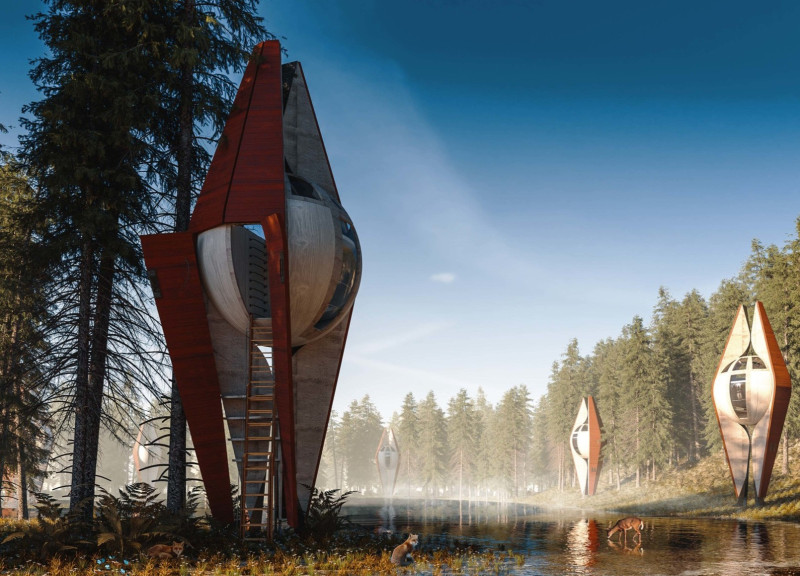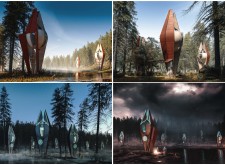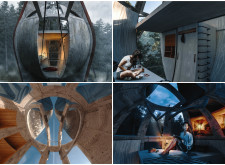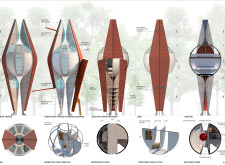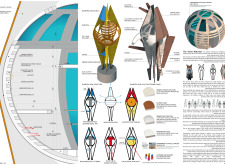5 key facts about this project
The Silent Watchers is a design that finds its home in the forests of Latvia, drawing on the characteristics of the Red Fox, a local species. The project integrates living and meditative spaces, creating a welcoming atmosphere. The layout features a lower area for sleeping that offers comfort, while an elevated meditation space encourages users to connect with the sky and surroundings.
Conceptual Framework
The design centers around the idea of the fox as a protective figure in the forest. This symbolism informs the overall structure, which reflects natural forms found in the environment. By separating the functions into distinct areas, the design allows users to enjoy both privacy and elevation. This layered approach fosters a closer relationship with nature and emphasizes the importance of reflection and tranquility.
Material Utilization
Material choices are carefully considered to support the project's goals. The primary support structure is made from local fire-retardant impregnated birch plywood, ensuring strength and safety. The support cover utilizes local birch plywood bonded with waterproof phenol resin adhesive, enhancing durability and resilience against the weather. These materials provide the necessary functions while promoting sustainability through local sourcing.
Energy Efficiency and Aesthetics
The design incorporates transparent solar cells applied to the glass components, which generate renewable energy and provide a connection to the outside. This choice aligns with the overall aesthetic, which is inspired by the shape of the Red Fox and integrates the pods into the dense landscape. The combination of form and function highlights a commitment to sustainable practices, where the visual aspects also enhance practical use.
Ecological Features
Additional environmental features, such as rainwater catchment systems, reinforce the project’s focus on ecological responsibility. The use of bioluminescent paint for cabin lettering and lighting creates a distinctive ambiance after sunset. This choice not only aids in visibility but also deepens the sense of connection to the natural setting, allowing the structure to blend softly into the nighttime landscape.


